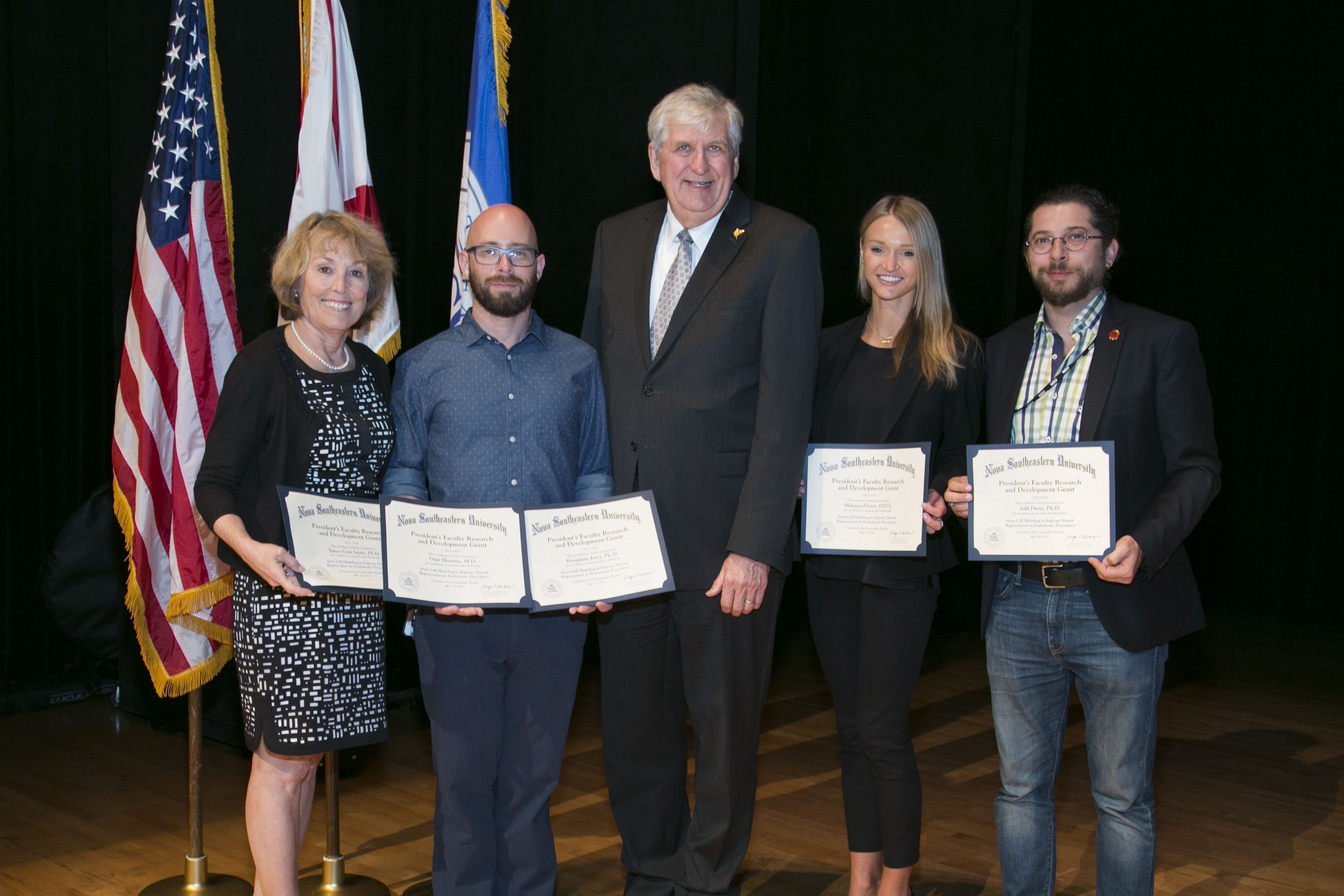Stem Cell Modeling to Improve Neural Regeneration in Endodontic Procedures
Grant Winners
- Taner Cem Sayin, Ph.D. – College of Dental Medicine
- Benjamin Josey, Ph.D. – College of Allopathic Medicine
- Adil Duru, Ph.D. – College of Allopathic Medicine
- Outi Hovatta, M.D. – College of Allopathic Medicine
- Melania Elsner, D.D.S. – College of Dental Medicine
Deans
- Linda C. Niessen, D.M.D., M.P.H., M.P.P. – College of Dental Medicine
- Director Richard Jove, Ph.D. – NSU Cell Therapy Institute
Abstract

Endodontic treatments describe any procedure that treats the inside of a tooth. Endodontic treatments become necessary when the pulp, the soft tissue within the root of the tooth, becomes inflamed or infected. If left untreated, it can lead to severe pain or the development of an abscess. The most common endodontic treatment is called a root canal, and more than 41,000 root canals are performed every day in the United States alone. While the ultimate goal of the procedure is to save as much of the original tooth as possible, frequently damaged tissue must be removed. These cases warrant attempts to regenerate the lost dental tissue. The current regenerative endodontic protocol is indicated for patients with incompletely developed teeth with open apices and a necrotic pulp. For this reason, many regenerative case reports involve patients between the age of eight and eighteen years old, and does not yet have applications in adults with fully-formed root apices. Overall, current clinical protocols have limited success in the regeneration of the pulp-dentin tissue, especially in regards to proper nociceptor sensory regeneration. Current literature indicates a return of vitality or normal responses to noxious stimuli in only half of all published case reports. The function of dental sensory nociception is to serve as a protective mechanism and warn against potential or actual damaging events for the tooth, as well as regulate immune function and in the pulpal tissue. Current in vitro models of dental innervation are severely lacking, as they utilize dissected animal neurons, which can differ significantly from human cells. In order to better understand the mechanisms of degeneration and regeneration of human dental neurons, in this study we propose to develop an in vitro model system of the endodontic procedure using human neurons differentiated from stem cells. The development of such a model will allow us to investigate novel treatments aimed at improving current endodontic practices and improve clinical outcomes regarding the restoration of vitality to patients teeth.